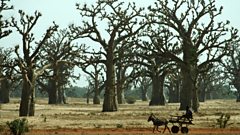A Strangely-Formed Exoplanet
Rethinking exoplanet atmospheres Also, more trees than we thought. How snakes shedding their skins is inspiring materials scientists, and why mangroves are good for the planet.
A good way of finding out about how our solar system formed is to look at other star systems and their planets. From the exoplanets so far examined in detail, a general correlation has emerged between the amount of elements heavier than helium and hydrogen, in the atmosphere, and the mass of the planet. It鈥檚 complicated, but this gives us clues to the size and composition of the planet as well as how and when it formed. But new observations of planet HAT-P-26b, 437 light years away, do not fit this trend. So what鈥檚 going on?
More Trees
Researchers have looked at tree cover in dryland regions and found that previous estimates were out by 40-47%. Using Google Earth鈥檚 very high resolution satellite images and local students and scientists to analyse the images, the team discovered there is as much forest cover in drylands (such as parts of Latin America, Africa, Australia and Southern Europe) as there are in tropical habitats. This increases the area of tree cover over the whole planet by 9%. The findings are important when putting in numbers into the big calculations about carbon cycles and climate change.
Mangroves
Dan Friess of the National University of Singapore studies mangrove forests around the coasts of tropical Pacific and Indian ocean countries. This kind of forest has turned out to store much more carbon than even rainforests, as measured by the hectare.
Snake-skin Inspiration
Given that the natural world has had millions of years to evolve the solutions to many problems, its little surprise that materials scientists often look to nature for solutions to our human problems. Inspiration from snakes shedding old skins has been applied to super-waterproof nanomaterials. This will hopefully improve on the lotus leaf effect, which involves special waxes and a textured surface, that means water beads up and runs off them, taking the dirt with it. When a coating based on the lotus gets damaged, the whole lot is compromised. But a group in Germany have looked at making materials that shed a layer when it gets damaged in a way similar to snakes shedding their skins.
Picture: A planet transits its star, credit: STAN HONDA/AFP/GettyImages
Presenter: Bobbie Lakhera
Producer: Fiona Roberts
Last on
More episodes
Clips
-
![]()
We鈥檝e got more trees!
Duration: 00:20
-
![]()
Learning from Snakes
Duration: 01:02
Broadcasts
- Thu 11 May 2017 19:32GMT成人快手 World Service except News Internet
- Fri 12 May 2017 02:32GMT成人快手 World Service Americas and the Caribbean
- Fri 12 May 2017 04:32GMT成人快手 World Service Online, Australasia, Europe and the Middle East & UK DAB/Freeview only
- Fri 12 May 2017 05:32GMT成人快手 World Service South Asia
- Fri 12 May 2017 06:32GMT成人快手 World Service East and Southern Africa & East Asia only
- Fri 12 May 2017 13:32GMT成人快手 World Service Australasia
Podcast
-
![]()
Science In Action
The 成人快手 brings you all the week's science news.




